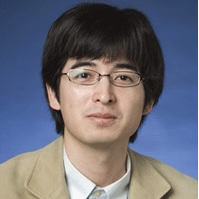Sustainable Utilization of Primary and Secondary Raw Materials
A special issue of Applied Sciences (ISSN 2076-3417). This special issue belongs to the section "Materials Science and Engineering".
Deadline for manuscript submissions: closed (30 April 2022) | Viewed by 7327
Special Issue Editor
Interests: mineral processing; recycling; colloid and interface science
Special Issues, Collections and Topics in MDPI journals
Special Issue Information
Dear Colleagues,
This Special Issue aims to provide an excellent forum for scientists and engineers to share and discuss their pioneering/original findings or insightful reviews on the sustainable utilization of primary and secondary raw materials. Reports on capturing the whole/wide raw material value chain via geometallurgical or process mineralogical approach are particularly encouraged. On the other hand, any kind of contribution under the broad frame work of sustainable utilization is also welcome.
Some potential contributions are listed below under “Keywords”. One of them is the complex ore/waste beneficiation via the development of a new characterization method and/or process intensification. For example, a proper characterization of complex/heterogeneous materials is still a challenging task, since the majority of characterization methods analyze either the average characteristics of the whole material or a narrow area of specific interest [1,2]. On the other hand, the efficient beneficiation of complex ore/waste strongly supported by their characterization has been in high demand in view of economic and environmental concerns [1].
Dr. Akira Otsuki
Guest Editor
Manuscript Submission Information
Manuscripts should be submitted online at www.mdpi.com by registering and logging in to this website. Once you are registered, click here to go to the submission form. Manuscripts can be submitted until the deadline. All submissions that pass pre-check are peer-reviewed. Accepted papers will be published continuously in the journal (as soon as accepted) and will be listed together on the special issue website. Research articles, review articles as well as short communications are invited. For planned papers, a title and short abstract (about 100 words) can be sent to the Editorial Office for announcement on this website.
Submitted manuscripts should not have been published previously, nor be under consideration for publication elsewhere (except conference proceedings papers). All manuscripts are thoroughly refereed through a single-blind peer-review process. A guide for authors and other relevant information for submission of manuscripts is available on the Instructions for Authors page. Applied Sciences is an international peer-reviewed open access semimonthly journal published by MDPI.
Please visit the Instructions for Authors page before submitting a manuscript. The Article Processing Charge (APC) for publication in this open access journal is 2400 CHF (Swiss Francs). Submitted papers should be well formatted and use good English. Authors may use MDPI's English editing service prior to publication or during author revisions.
[1] Otsuki, A.; Chen, Y.; Zhao, Y. Characterisation and beneficiation of complex ores for sustainable use of mineral resources: Refractory gold ore beneficiation as an example. Int. J. Soc. Mat. Eng. Res. 2014, 20, 126–135.
[2] Otsuki, A.; Bryant, G. Characterization of the interactions within fine particle mixtures in highly concentrated suspensions for advanced particle processing. Adv. Colloid Interface Sci. 2015, 226, 37–43.
Keywords
- Geometallurgy/process mineralogy
- Complex ore/waste
- Characterization
- Process intensification
- Environmental/economic evaluation





